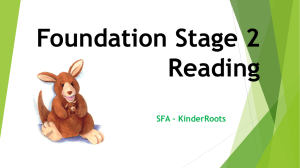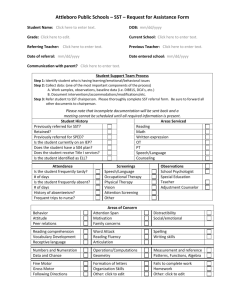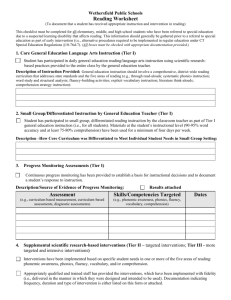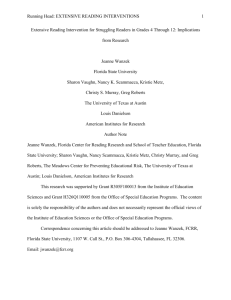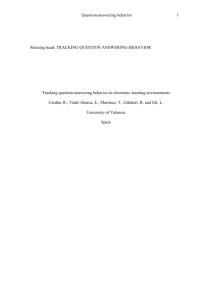Classroom Language Interventions
advertisement
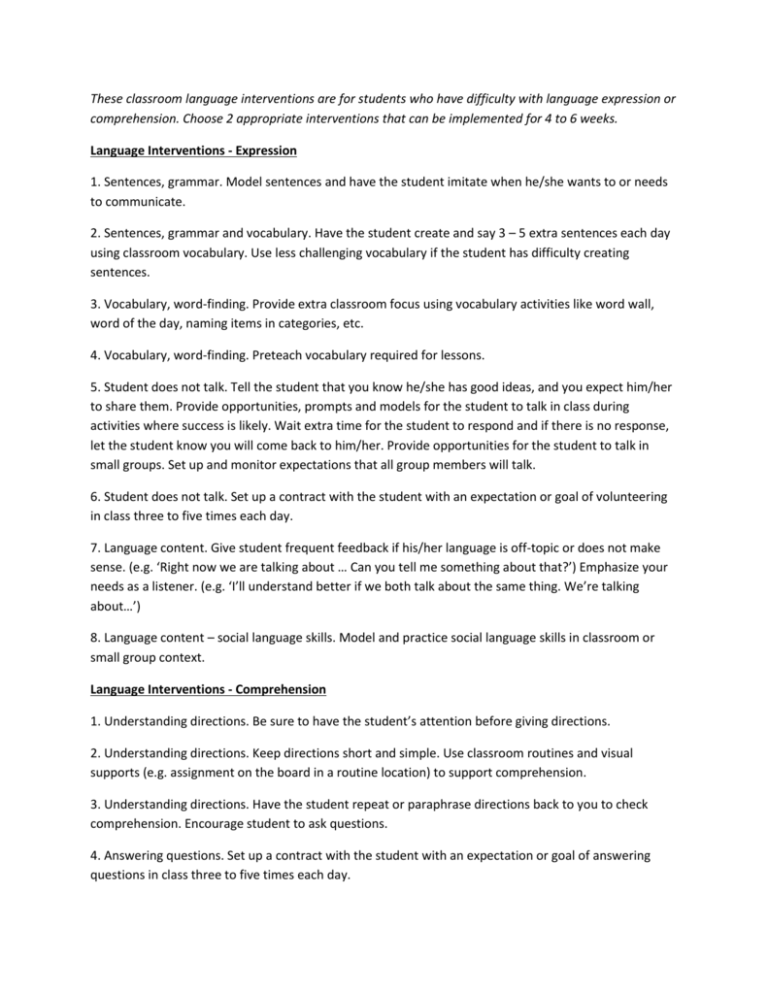
These classroom language interventions are for students who have difficulty with language expression or comprehension. Choose 2 appropriate interventions that can be implemented for 4 to 6 weeks. Language Interventions - Expression 1. Sentences, grammar. Model sentences and have the student imitate when he/she wants to or needs to communicate. 2. Sentences, grammar and vocabulary. Have the student create and say 3 – 5 extra sentences each day using classroom vocabulary. Use less challenging vocabulary if the student has difficulty creating sentences. 3. Vocabulary, word-finding. Provide extra classroom focus using vocabulary activities like word wall, word of the day, naming items in categories, etc. 4. Vocabulary, word-finding. Preteach vocabulary required for lessons. 5. Student does not talk. Tell the student that you know he/she has good ideas, and you expect him/her to share them. Provide opportunities, prompts and models for the student to talk in class during activities where success is likely. Wait extra time for the student to respond and if there is no response, let the student know you will come back to him/her. Provide opportunities for the student to talk in small groups. Set up and monitor expectations that all group members will talk. 6. Student does not talk. Set up a contract with the student with an expectation or goal of volunteering in class three to five times each day. 7. Language content. Give student frequent feedback if his/her language is off-topic or does not make sense. (e.g. ‘Right now we are talking about … Can you tell me something about that?’) Emphasize your needs as a listener. (e.g. ‘I’ll understand better if we both talk about the same thing. We’re talking about…’) 8. Language content – social language skills. Model and practice social language skills in classroom or small group context. Language Interventions - Comprehension 1. Understanding directions. Be sure to have the student’s attention before giving directions. 2. Understanding directions. Keep directions short and simple. Use classroom routines and visual supports (e.g. assignment on the board in a routine location) to support comprehension. 3. Understanding directions. Have the student repeat or paraphrase directions back to you to check comprehension. Encourage student to ask questions. 4. Answering questions. Set up a contract with the student with an expectation or goal of answering questions in class three to five times each day. 5. Answering questions. Pause after questions and wait. Let student know you expect him/her to be thinking and volunteering. Do not allow fast students to dominate responding. 6. Understanding stories and instructions. Provide simple information summaries, using a routine format as you teach new information or stories. Have students participate in giving the summary. A sample format might be: * The story (lesson) is about _________. * Three important things that happened (or we have learned) are _____________. * I think ____________. (personal response statement) 7. Teach students to self-monitor comprehension of reading and instruction, and to use appropriate strategies (e.g. re-reading, look for clues from context, pictures, etc., asking questions) when they do not understand. *Document the language interventions and record results on the calendar or a data log. Observe the student’s focus language behavior in class at least 2 x per week during a 4-6 week intervention period. Date each observation and rate language behavior using the Language Scale below. If possible also measure frequency of the focus language behavior during the observation period (e.g. # of sentence responses in class, % off-topic or inappropriate responses, % directions followed). Language Intervention Rating Scale 1. Student consistently does not use appropriate language behavior. 2. Student relies on teacher prompts and seldom uses appropriate language behavior compared with peers. 3. Appropriate language behavior is increasing with interventions but still below peers and dependent on teacher and peer prompts. 4. Appropriate language behavior is increasing satisfactorily and student is becoming more independent with improved behavior.



